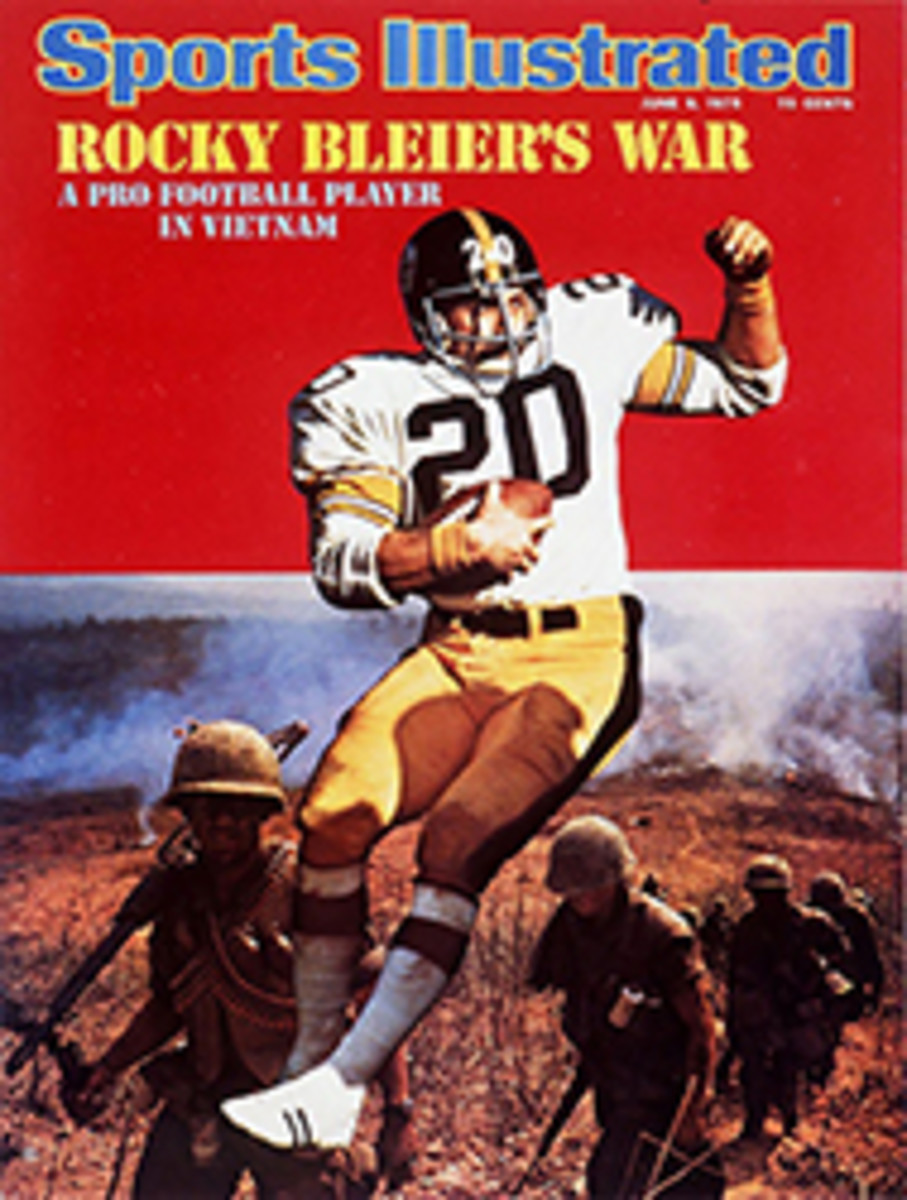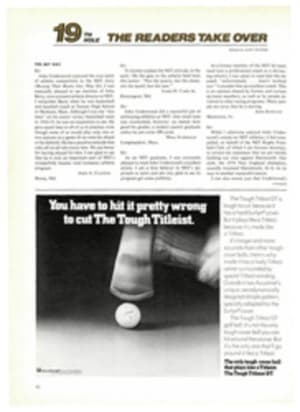
Jim's jolly rejuvenation
Throughout his career, Jim Kaat, the greatest 6'4" left-handed Dutch pitcher in history, has obediently answered to "Kitty." But why? His name is not pronounced "cat," but "cot," as in army cot, canvas cot, uncomfortable-but-it's-the-best-we-can-do cot. Nor is there anything feline about his appearance: large feet, long, thick legs, short torso and arms, and, on top, a flat face with a forceful jaw and a generous nose rising to a high forehead and a Chicago White Sox cap.
So why all the catcalls? Ever since being rejuvenated by an unorthodox pitching motion, he has been kitty-littered with quips. Jim Kaat has nine lives. Jim Kaat always lands on his feet. You can teach an old Kaat new tricks.
To be sure, he has been something of the cat's pajamas since Minnesota waived him good by in August 1973. Kaat was 21-13 last season and is currently 8-2. Only two years ago he was a 34-year-old junk pitcher with an 11-12 record and a 4.41 ERA. The Twins, with whom he became the winningest active left-handed pitcher in the AL, figured he was washed up. But the Sox, particularly Johnny Sain, figured he only needed retreads.
Sain had been Kaat's pitching coach in 1965 and 1966 when he won 43 games for Minnesota. "It's really great to work with someone who thinks exactly as you do," Kaat said then. He was such an enthusiastic disciple that when Sain was unexpectedly fired after the 1966 season, Kaat wrote an angry letter to the front office. And in another display of devotion the following year he named his Great Dane after him. So after the two joined up again in Chicago it was just like old times.
"I knew what Jim was going through," says Sain, who was 33 years old in 1951 when the Braves prematurely traded him—he then had two good years with the Yankees. "Fortunately, both of us were willing to experiment and try new things. Not many pitchers change their entire delivery the way he has, though. I'm amazed by it."
No less amazed are the American League hitters, who began yelling "quick pitch" as soon as they saw Kaat's no-windup motion in spring training. The idea was planted last year when Sain suggested a quicker windup. Now the windup has been quickened out of existence. Kaat, leaning in, takes the catcher's sign with his left foot on the rubber, his right foot back and the ball held waist high. Instead of winding up, he steps forward with his right leg, swings his left arm around and releases any one of three particularly effective pitches: a slow curve, a fast curve (or "slurve," which Sain taught him in Minnesota) and a surprisingly peppy fastball. "Instead of throwing with my body the way most pitchers do, it's almost entirely my arm," Kaat says. "It's hard to understand, but my fastball is better than it's ever been."
As a result, batters no longer have time to dig in and umpires are asking if Kaat would please wait until their chest protectors are in place. Even his own infielders must be ever vigilant. After being caught off guard earlier this year, Third Baseman Bill Melton said hopefully, "You don't plan to do that all season, do you?"
"People usually complain that games are too slow," Kaat says. "I'm only trying to get everybody home sooner."
During his 16-year career Kaat has always been a fast worker because he keeps the ball in the strike zone, where, for better or worse, it can be swung at. Thus he must rely heavily on sound defensive play, and at one position at least he has the winner of 13 Gold Glove awards—himself. (You may wonder how when you see the rotting leather glove he uses, an 11-year-old rag. The strap is held together with friction tape and there is a hole in the pocket.)
What pleases him most about his career is not the 223 wins, the 2,060 strikeouts or his 1965 World Series victory but his longevity. He says he learned years ago not to worry about individual games. Last week, when he five-hit Detroit only to lose 2-0, he said simply, "That's O.K. It makes up for that 8-6 win I got earlier in the season. I'm really not pitching as good as my record shows. I can go only as far as my relief pitchers let me."
This is not gratuitous praise. Last year he gave teammate Terry Forster, the league's top fireman, a television set. He has presented golf clubs to others.
An enthusiastic golfer, Kaat carries what he calls a "traveling nine" handicap, which he tests during the season on such championship courses as Pebble Beach and Firestone. "You'd be surprised at the similarities in the mechanics of the golf swing and the pitching motion," he says. "Going to Johnny Sain, in fact, is like going to a golf pro."
A $100,000 salary and few outside interests enable him to play golf all winter. He has only to step out of his house at Errol Estates in Apopka, Fla., the Foliage Capital of the World, and he is on the 2nd tee. For a change of scenery he owns a condominium on the same course.
Despite his current success, which includes 15 wins in 17 decisions since last September, Kaat does not anticipate pitching much longer. His age, his salary, the unpredictable nature of his profession could make this his last year, he feels. When he does retire he would like to combine coaching and broadcasting. "I think the hitters will catch on to me in a while," he says. "In recent years I've had some media people try to run me out. They thought I was finished. I wasn't, but I'll know it when it happens. Then I'll just die of natural causes—lots of runs and base hits."
Sain and Manager Chuck Tanner, however, liken Kaat's physical vigor and mental discipline to that of their former teammate, Warren Spahn, who pitched successfully into his 40s. Kaat, they believe, can do the same. Compared to Spahn he is—oh, well—just a kitten.
PHOTO
KAAT'S GRIN BESPEAKS HIS 8-2 RECORD

